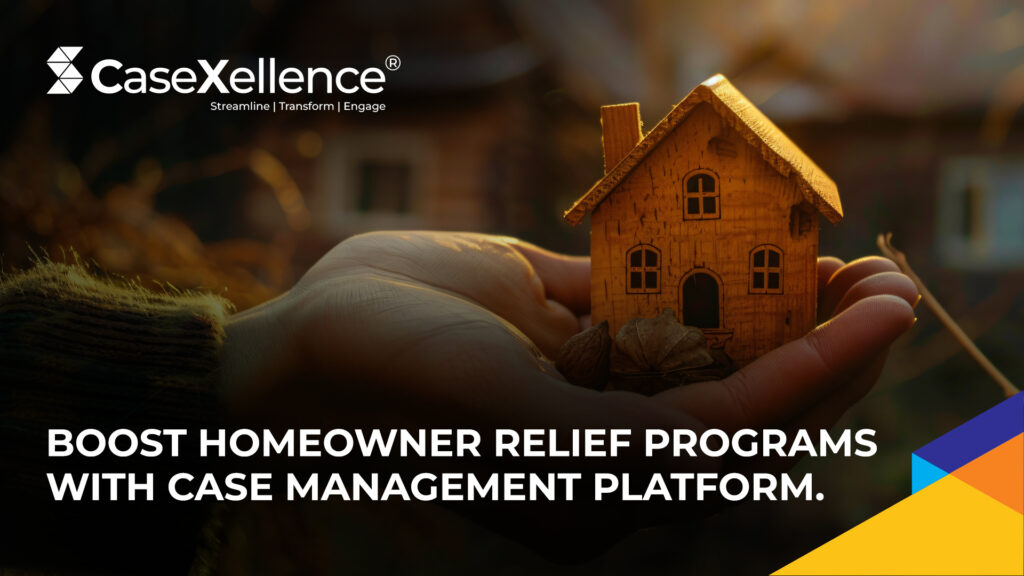The Homeowner Assistance Fund (HAF), part of the American Rescue Plan Act, provides nearly $10 billion to support homeowners facing financial hardships. This funding is distributed to states, U.S. territories, and Indian Tribes and can be used for mortgage payments, homeowner’s insurance, utility payments, and other specified purposes. Implementing an advanced case management platform ensures these funds are managed and distributed efficiently, maximizing their impact and reach. Here are five compelling reasons why state and local governments should consider adopting such a platform:
Table of Contents
1. Streamlined Application Processes
A comprehensive case management platform simplifies the homeowner assistance fund application process, making it more accessible and efficient for both applicants and administrators. Traditional methods of handling applications can be cumbersome and prone to errors, leading to delays and frustration. A digital case management system automates many aspects of the application process. Applicants can easily fill out forms online, upload necessary documents, and track the status of their applications in real-time. This not only reduces the administrative burden but also ensures that homeowners receive the assistance they need promptly. Platforms like CaseXellence excel in providing user-friendly application interfaces that enhance the applicant’s experience
2. Enhanced Data Management and Reporting
Managing a large volume of applications and associated data manually can be overwhelming and inefficient. A case management platform offers a centralized database where all information is stored securely. This enables easy access to data, facilitating better decision-making and reporting. Governments can generate detailed reports on the status of homeowner relief programs, track trends, and identify areas for improvement. Enhanced data management capabilities also ensure compliance with federal and state regulations, providing transparency and accountability in the use of funds. CaseXellence stands out with its robust data analytics and reporting tools, making data management seamless and insightful.
3. Improved Coordination and Communication
Homeowner assistance program management often involves multiple stakeholders, including government agencies, non-profit organizations, and financial institutions. A case management system enhances coordination and communication among these entities. By providing a unified platform for collaboration, it ensures that all parties have access to the same information and can work together seamlessly. This minimizes the risk of miscommunication and errors, ensuring that assistance is delivered efficiently and effectively. Additionally, integrated communication tools within the platform allow for better interaction with applicants, keeping them informed throughout the process. A low-code easy to use case management platform like CaseXellence incorporates advanced collaboration features that streamline communication across all stakeholders.
4. Personalized Support for Homeowners
Each homeowner’s situation is unique, and a one-size-fits-all approach is rarely effective. A case management platform allows for personalized support by tracking individual cases and tailoring assistance to meet specific needs. Case managers can easily access comprehensive profiles of each applicant, including their financial status, application history, and any previous interactions. This enables them to provide targeted support and address any issues promptly. Personalized support not only enhances the effectiveness of homeowner relief programs but also improves the overall experience for applicants. CaseXellence is a groundbreaking platform designed to streamline the management of federal benefits for state governments and agencies. With CaseXellence you can embrace the power of intelligent automation, impeccable compliance, and transformative efficiency in handling diverse benefits management programs.
5. Scalability and Flexibility
Homeowner relief programs can experience fluctuations in demand, especially during times of crisis. A digital case management system like CaseXellence offers scalability and flexibility to handle varying workloads. Whether dealing with a sudden influx of applications due to a natural disaster or expanding the scope of assistance programs, a case management platform can easily adapt to changing needs. This scalability ensures that governments can provide continuous support without being overwhelmed by administrative challenges. CaseXellence provides scalable solutions that can effortlessly adapt to increasing demands and evolving program requirements.
In conclusion, adopting a case management platform for homeowner relief programs offers numerous benefits for state and local governments. From streamlining the homeowner assistance fund application process to enhancing data management and reporting, an intelligent case management platform is essential. A 2022 Pew survey revealed that 36 million Americans have used alternative financing for home purchases, with 17.5 million living in mobile or manufactured homes. This highlights the need for inclusive and efficient homeowner assistance programs. By embracing modern technology, governments can ensure their programs are effective, responsive, and capable of meeting community needs. Investing in a robust case management system is a commitment to better serve homeowners in times of need.
Related Blogs about Financial Aid Management System (FAMS)
- Streamlining Financial Aid Management in the Government Sector: The Power of CaseXellence
- The Importance of Financial Aid Management Systems in Rental Assistance: The Case for CaseXellence
- How Does a Case Management Platform Help in Smooth Deployment of Public Sector Benefits Management Programs?
- Empowering Stability: Streamlining Homeowner Assistance Programs with CaseXellence’s FAMS CX Module
- How Does a Case Management Platform Help in Smooth Deployment of Public Sector Benefits Management Programs?
